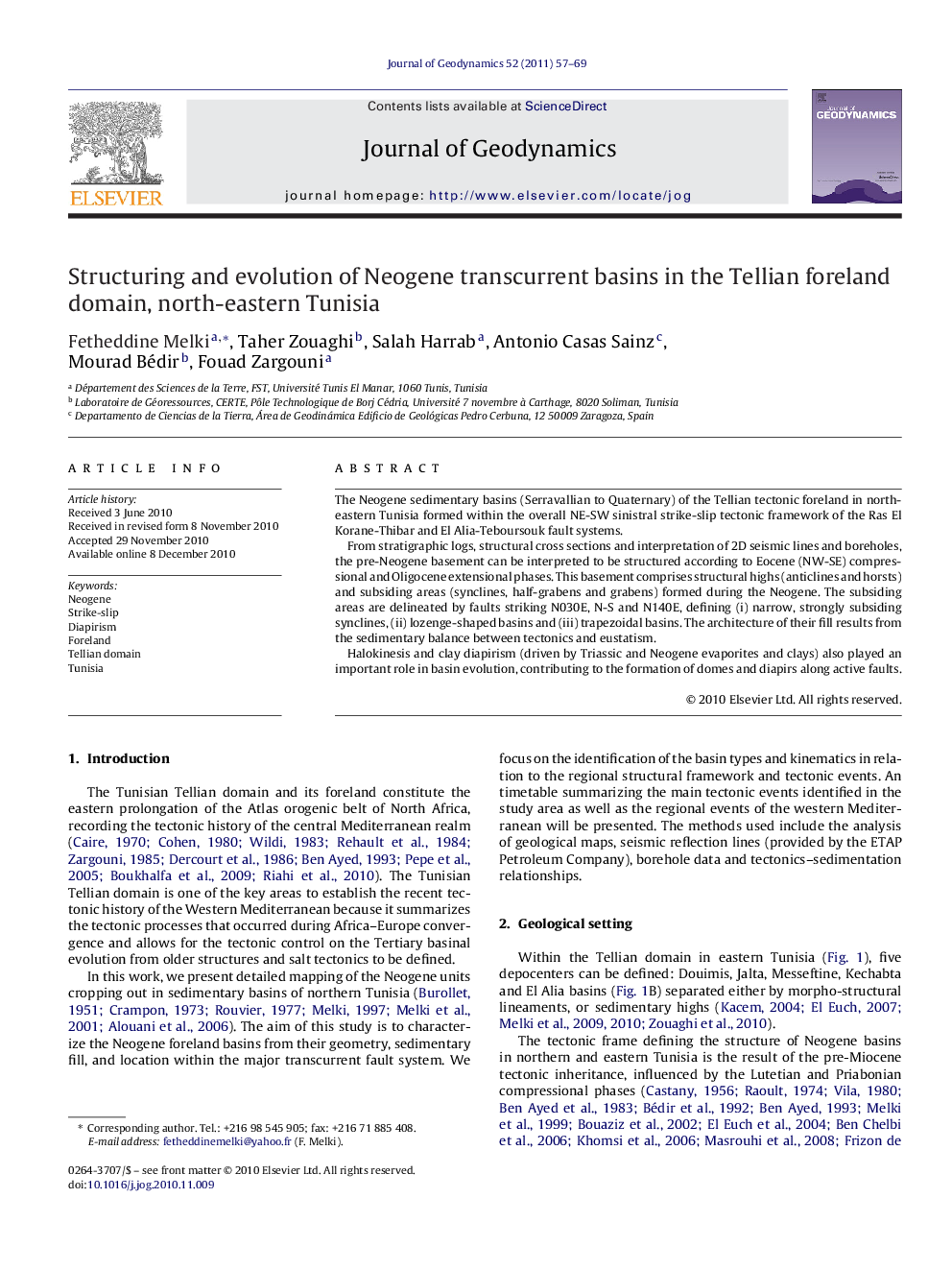| Article ID | Journal | Published Year | Pages | File Type |
|---|---|---|---|---|
| 4688380 | Journal of Geodynamics | 2011 | 13 Pages |
The Neogene sedimentary basins (Serravallian to Quaternary) of the Tellian tectonic foreland in north-eastern Tunisia formed within the overall NE-SW sinistral strike-slip tectonic framework of the Ras El Korane-Thibar and El Alia-Teboursouk fault systems.From stratigraphic logs, structural cross sections and interpretation of 2D seismic lines and boreholes, the pre-Neogene basement can be interpreted to be structured according to Eocene (NW-SE) compressional and Oligocene extensional phases. This basement comprises structural highs (anticlines and horsts) and subsiding areas (synclines, half-grabens and grabens) formed during the Neogene. The subsiding areas are delineated by faults striking N030E, N-S and N140E, defining (i) narrow, strongly subsiding synclines, (ii) lozenge-shaped basins and (iii) trapezoidal basins. The architecture of their fill results from the sedimentary balance between tectonics and eustatism.Halokinesis and clay diapirism (driven by Triassic and Neogene evaporites and clays) also played an important role in basin evolution, contributing to the formation of domes and diapirs along active faults.
Research highlights▶ This study leads to identify and characterize the Neogene tectonic foreland basins of the north-eastern Tunisia. ▶ The pre-Neogene basement have controlled the sedimentary cover into highs and subsiding domains. ▶ The defined structures are bounded by NE-SW, N-S and NW-SE striking strike-slip faults. ▶ Three types of Neogene basins are defined (i) narrow troughs, (ii) lozenge-shaped basins and (iii) trapezoidal basins. ▶ These structures have been evolved under tectonic, halokinetic and eustatism controls.
